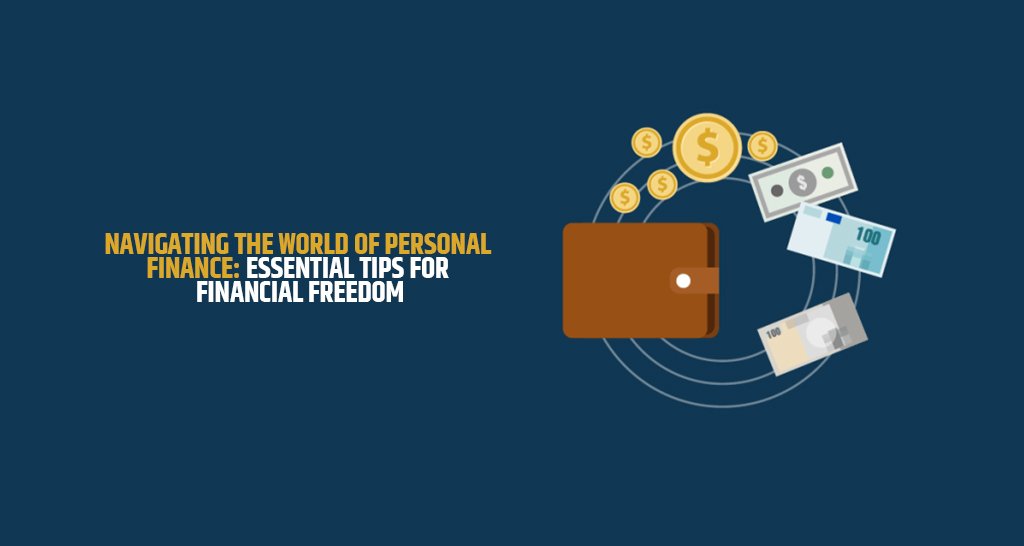Understanding Personal Finance
Personal finance refers to the management of an individual’s financial activities, including budgeting, saving, investing, and debt management. It is an essential aspect of everyday life that influences one’s financial health and overall quality of life. By grasping the foundations of personal finance, individuals can make informed decisions about their money, which ultimately leads to greater financial stability and independence.
Budgeting is one of the fundamental components of personal finance. It involves creating a plan that outlines how income will be spent or saved over a specific period. This process helps individuals track their expenses and identify areas where they can cut back to enhance savings. When constructing a budget, it is crucial to categorize expenses into fixed costs, such as rent and utilities, and variable costs, such as entertainment and groceries. A well-structured budget serves as a roadmap for financial goals.
Saving is equally vital in personal finance, as it provides a safety net for unexpected expenses and enables individuals to invest in future opportunities. An emergency fund, typically covering three to six months of living expenses, is an essential aspect of saving. Furthermore, various savings accounts and investment platforms allow individuals to maximize the growth potential of their funds while minimizing risks.
Investing is another critical element of personal finance that involves allocating resources into financial assets with the expectation of generating returns. It can take many forms, including stocks, bonds, and real estate. A solid investment strategy is often tailored to an individual’s risk tolerance, financial goals, and time horizon.
Lastly, effective debt management is essential for maintaining financial health. This encompasses understanding the types of debt, such as credit cards or student loans, and determining strategies to repay them efficiently. Prioritizing high-interest debt can save individuals significant amounts over time. By comprehending these aspects of personal finance, individuals can navigate their financial journeys more effectively, leading to greater confidence in their monetary decisions.
Creating a Budget: The Foundation of Financial Health
A budget serves as a fundamental tool for managing personal finances, helping individuals track income and expenditures effectively. The first step in creating a budget is to determine total income. This encompasses not only wages but also any additional revenue from side jobs, investments, or other sources. Careful calculation of total income provides a clear picture of available funds, which is essential for effective financial planning.
The next crucial stage involves tracking expenses. It is advisable to categorize spending into fixed expenses—such as rent and utilities—and variable expenses, including groceries and entertainment. This categorization allows individuals to identify spending patterns and highlights areas where adjustments may be necessary. Various budgeting methods can facilitate this process. The 50/30/20 rule allocates 50% of income for needs, 30% for wants, and 20% for savings and debt repayment. Alternatively, zero-based budgeting requires every dollar to be assigned a purpose, ensuring that total income minus expenditures equals zero.
Several tools and apps are available to assist in maintaining a budget efficiently. Applications such as Mint, YNAB (You Need a Budget), and PocketGuard offer user-friendly interfaces for tracking expenses and visualizing spending habits. Utilizing these tools can automate the budgeting process and provide real-time analytics, making it easier to adhere to financial objectives.
As financial circumstances evolve, it’s vital to revisit and adjust the budget accordingly. This may involve recalibrating spending categories due to changes in income, unexpected expenses, or shifting financial goals. Regular review of the budget fosters resilience to economic fluctuations and helps maintain financial health in the long term. Establishing a dynamic budgeting process not only aids in effective personal finance management but also paves the way toward achieving overall financial freedom.
Saving and Investing: Building Wealth Over Time
Saving and investing are fundamental components of achieving long-term financial security and building wealth over time. A disciplined approach to both can create a strong foundation for achieving personal financial goals. Initially, one should establish a saving habit by setting aside a portion of income in a secure account, such as a high-yield savings account. These accounts typically offer better interest rates than traditional savings options, allowing funds to grow more efficiently. An emergency fund, ideally containing three to six months’ worth of expenses, is equally crucial. This fund acts as a safety net for unexpected financial challenges, preventing individuals from needing to resort to credit options that may accrue debt.
Once an adequate savings strategy is in place, individuals should focus on investing to further their financial growth. Various investment options are available, including stocks, bonds, and mutual funds. Stocks represent ownership in a company, providing the potential for substantial returns over time. Bonds, in contrast, are loans made to governments or corporations, typically offering lower returns but with a lower risk profile. Mutual funds pool money from multiple investors to purchase a diversified portfolio of stocks and bonds, making them an attractive option for those who seek diversification without the need for extensive market knowledge.
One of the most powerful tools in investing is compound interest, which allows wealth to accumulate over time. When interest is earned on both the initial principal and the reinvested interest, it accelerates the growth of investments, especially over long durations. Therefore, early investments—even small amounts—can yield significant benefits in the future. Developing an investment plan involves assessing one’s financial goals, risk tolerance, and time horizon to determine the most suitable investment strategies. Engaging in continuous learning and monitoring the investment portfolio frequently can further enhance one’s ability to navigate financial markets effectively. By prioritizing both savings and investing, individuals can steadily progress toward financial independence.
Debt Management: Strategies for Financial Freedom
Effective debt management is pivotal in the journey towards achieving financial freedom. Understanding the distinctions between good debt and bad debt is essential. Good debt typically refers to loans that can enhance one’s financial future, such as mortgages or student loans, which enable status improvement or career advancement. In contrast, bad debt involves borrowing for consumption, like credit card debt, which often leads to financial stagnation due to high-interest rates and fees.
High-interest debt poses significant challenges for individuals aiming to achieve financial security. It can compound quickly, resulting in larger payments over time. To address this, implementing structured repayment strategies such as the snowball method or the avalanche method can be effective. The snowball method involves paying off the smallest debts first, which can provide psychological motivation as individuals see debts eliminated. Alternatively, the avalanche method emphasizes paying off debts with the highest interest rates first, minimizing the total interest paid over time.
Additionally, recognizing and avoiding common pitfalls in debt management is crucial. Only borrowing what one can realistically pay back, maintaining a strict budget, and refraining from accumulating new debt while paying off existing balances are fundamental practices. This disciplined approach can prevent the cycle of debt from becoming overwhelming.
Furthermore, understanding credit scores is vital in managing personal finance. A good credit score can lead to lower interest rates and more favorable loan terms. Regularly monitoring credit reports, paying bills on time, and reducing credit utilization are recommended actions to maintain a healthy credit profile. Mastering these debt management strategies not only alleviates current financial burdens but also paves the way for lasting financial freedom.



